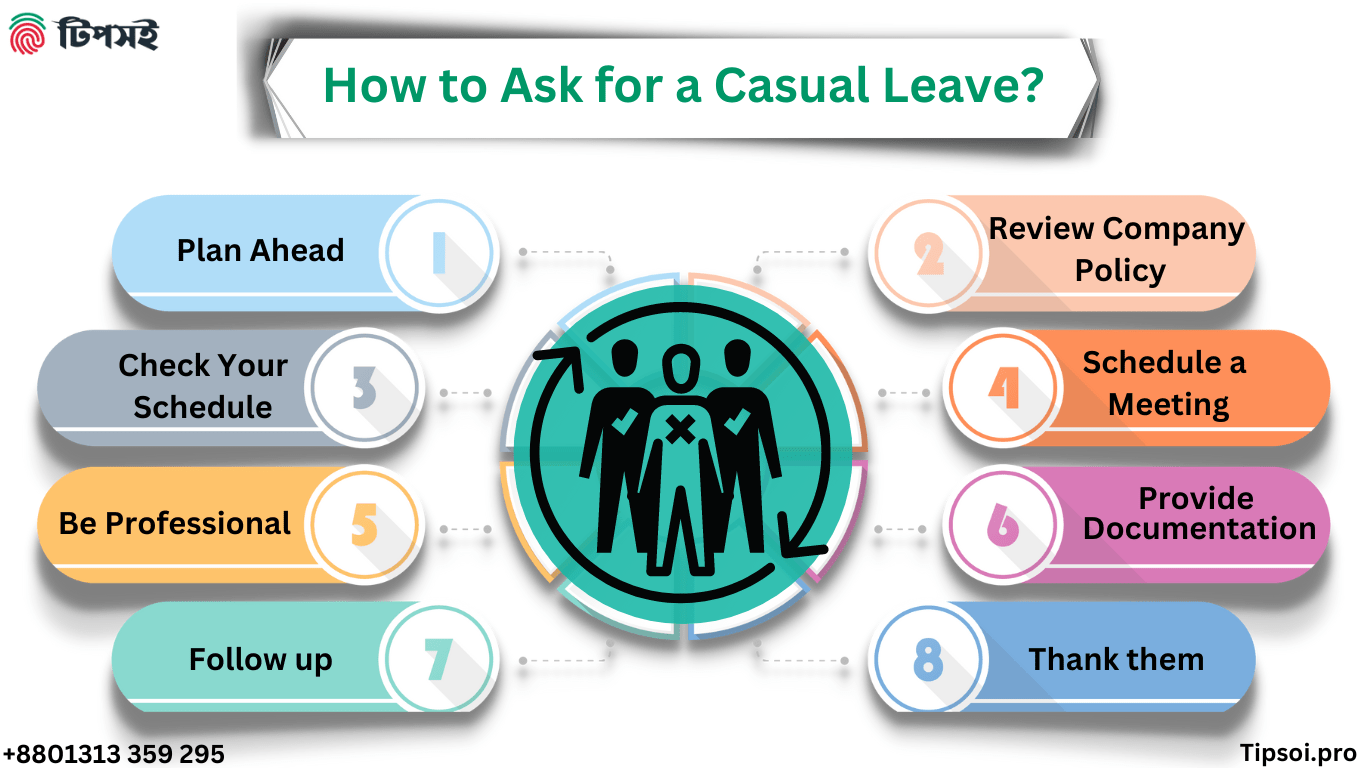In terms of casual leave, this is a type of time off from work that you are able to take if you need to take care of something important that you cannot plan ahead for. The event can include a doctor’s appointment, a family emergency, or any unexpected event that requires your attention. “Casual” leave isn’t something you plan in advance, like a vacation or a holiday.

As a matter of fact, it’s up to your manager or CEO to decide whether you can take a leave of absence, and they will decide if it’s okay. An individual’s ability to take leave of absence varies based on the situation and the rules of the workplace.
All things considered, you should only take leave from work if you really need it, and you shouldn’t abuse it. By all means, you need to make sure you have a valid reason to take the leave and that you’ve told the right person in advance.
However, if your organization have a HRMS System or software, you can apply for leave through that system as well. Also, most of the offices now have biometric authentication system for proper attendance maintenance. So, eventually it will notify your immediate manager if you haven’t already entered the office premises on time.
How to Ask for Casual Leave?
Indeed, if you want to take a emergency leave from work, you should follow proper protocol and etiquette. For a smooth handling of your request, you can follow these steps:

1. Plan ahead:
At first, if you intend to take casual leave, make sure you have a valid reason. And also that you have prepared in advance.
2. Review company policy:
Secondly, check your company’s policies on temporary leave to understand the guidelines and requirements for requesting and taking time off.
3. Check your schedule:
Another key point, ensure that your absence won’t cause any problems to the team. At the same time, ensure that someone will cover your duties.
4. Schedule a meeting:
At this point, schedule a meeting with your supervisor or manager. Correspondingly, discuss your request for casual leave and provide them with the details of your absence.
5. Be professional:
Unquestionably, always conduct yourself in a polite and professional manner. In short, explain why you are absent and the length of time you will be away.
6. Provide documentation:
Point often overlooked, you should include any documentation that supports your request for leave of absence, including a doctor’s note.
7. Follow up:
Provided that, ensure your supervisor or manager has received and approved your request for leave.
8. Thank them:
To emphasize, thank your supervisor for considering your request. Let them know that you will make every effort to minimize the impact of your absence on your team and the company.
To repeat, Follow these mentioned steps to make your temporary leave request go smoothly.
Amount of Time for Casual Leave:
It depends on the specific situation and the specific rules of your company or organization, and how how much time off you can take. Case-by-case, temporary leave is often granted.
Alternatively, some companies let you take a set number of days off. Others may have a more flexible policy. Understanding the rules and guidelines is essential to make the most of your unplanned leave.
Reasons for Casual Leave
Employees’ unpremeditated leave allows them to attend to important obligations they could not prepare for in advance. Some examples of reasons why someone may need to take unplanned leave include:
- Attending a doctor’s appointment or other medical appointments.
- Taking care of a sick family member.
- Funerals or other family emergencies may require participation.
- Taking care of personal matters they cannot put off.
Importance of Casual Leave
Casual leave allows employees to maintain a balance between work and life. Employees can therefore perform better when they take casual leave. Employees who leave their job for personal or family reasons may be able to be rehired by their employers. By making sure both parties understand how the process works. In addition, casual leave should only be taken when necessary. Employers may have policies and procedures for requesting and approving casual leave, and employees should always follow these procedures and use the leave responsibly.
Wrapping up
Casual leave gives employees the flexibility to deal with priorities they cannot plan in advance. It’s an important tool that can help employees maintain a healthy work-life balance and be more productive and engaged at work. The tool can help employees maintain a healthy work-life balance and be more productive and engaged at work.
